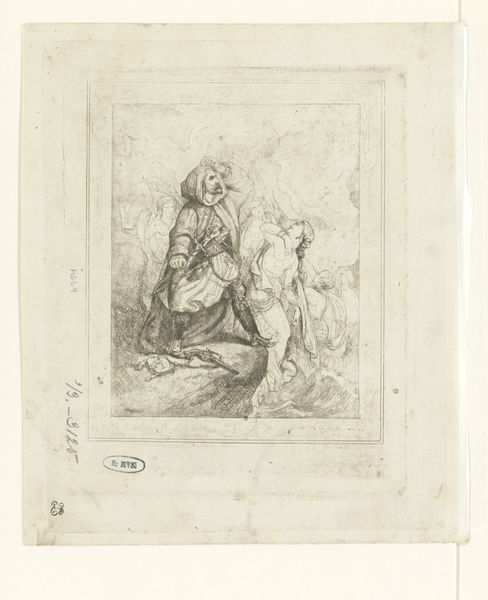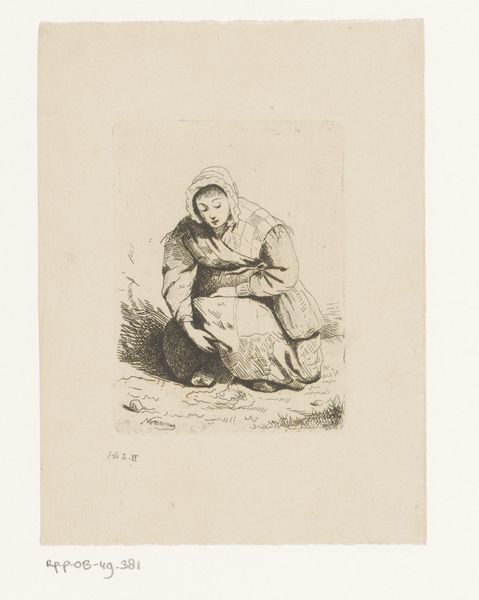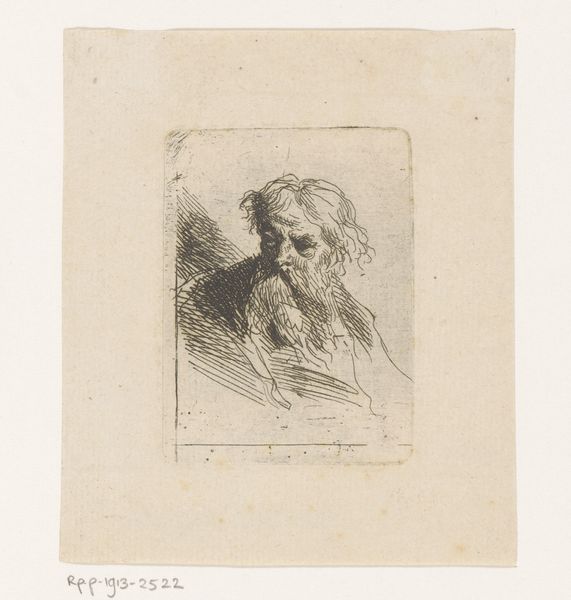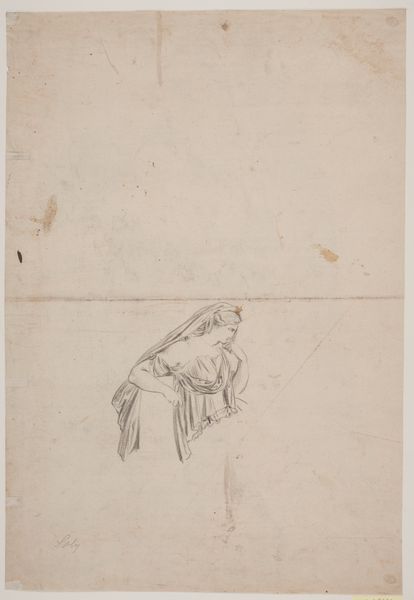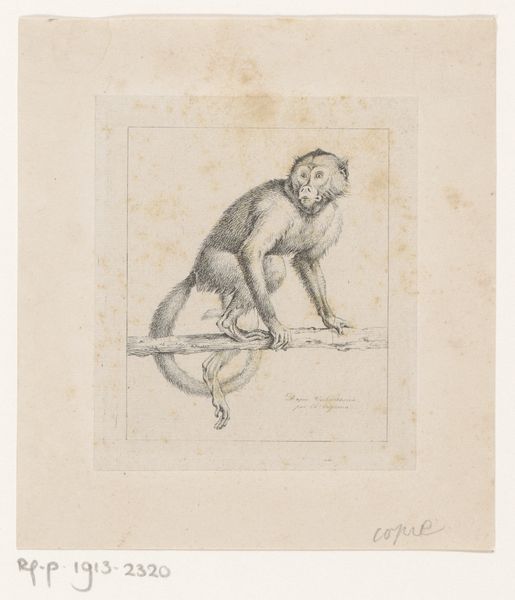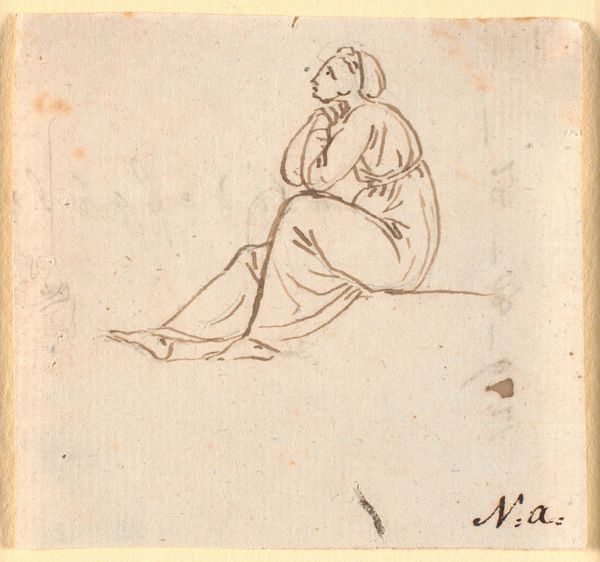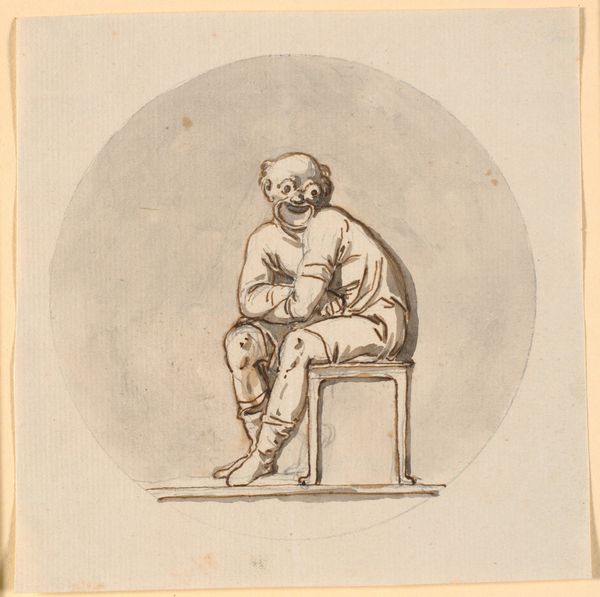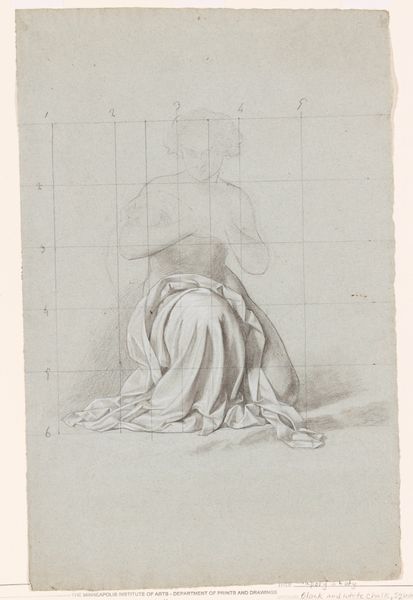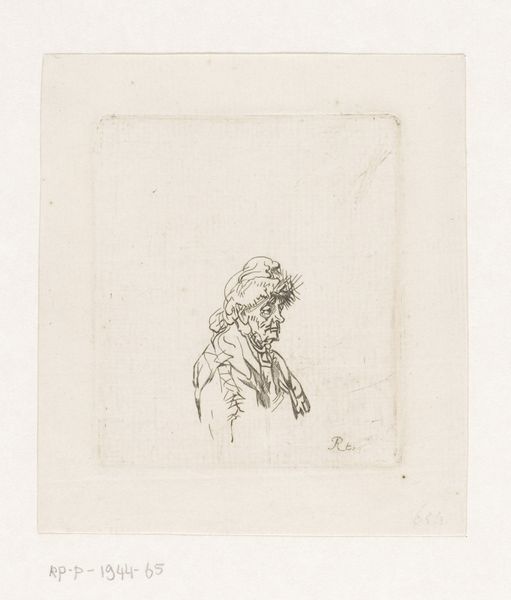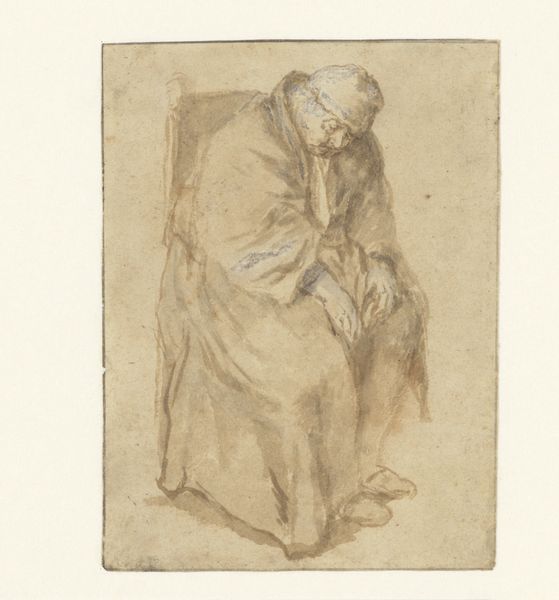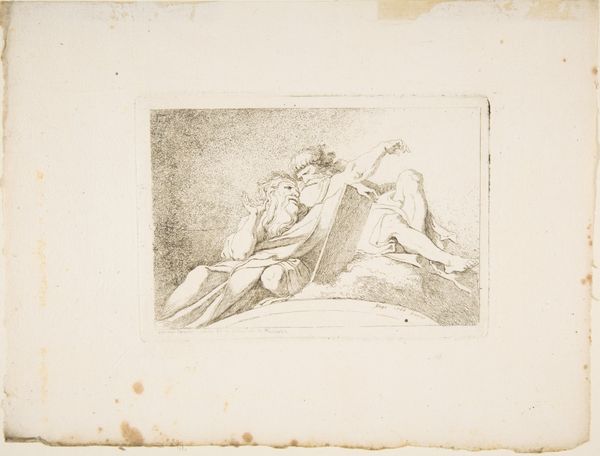
drawing, print, ink, pen
#
portrait
#
pencil drawn
#
drawing
#
neoclacissism
# print
#
ink
#
pen
#
academic-art
Dimensions: sheet: 3 1/16 x 2 15/16 in. (7.8 x 7.4 cm)
Copyright: Public Domain
Curator: This is Bertel Thorvaldsen's drawing, "A Seated Youth," likely created between 1790 and 1844. It's rendered in pen and ink, offering a glimpse into academic art practices of the era. Editor: The first thing that strikes me is the figure's profound melancholy. There’s an inward focus to his pose, as if he's carrying the weight of the world. Curator: Absolutely. Thorvaldsen, steeped in Neoclassicism, often used such poses to evoke deeper emotional states and convey moral narratives rooted in classical ideals of introspection. We see this motif recurring, drawing from cultural memories of similar seated figures in ancient Greek sculpture. Editor: And within that Neoclassical framework, you see a subversion, too. His bare leg and relaxed drapery – these feel less like an exercise in idealization, and more like vulnerability being revealed through an intimate lens. This image invites us to engage in empathy and consider its historical construction of masculine sensitivity. Curator: It’s in that very tension—between ideal and real—that the image gains its power. Consider the precision of the linework; see how the ink defines not only the contours of the body, but also the psychological weight he carries. The symbols, while subtle, create an enduring cultural impression, don't you think? Editor: I agree. It reminds me of the Romantics’ interest in interiority and emotion; he embodies this period where the heroic begins to give way to something more recognizably…human. Perhaps Thorvaldsen used the figure to express both individual and societal anxieties. The figure is very much seated in, maybe even stuck within, the frame of tradition, wrestling with that position. Curator: Indeed. The lasting appeal of "A Seated Youth" stems from how Thorvaldsen’s composition blends classical conventions with intimate emotional expression, creating a bridge across time. Editor: Right. It makes me wonder, whose stories haven't been given a seat in these very halls? How do we ensure all bodies—particularly queer, Black, brown, disabled, and women's bodies—are not relegated to mere sketches, but are honored in the permanent collections and broader narratives?
Comments
No comments
Be the first to comment and join the conversation on the ultimate creative platform.

